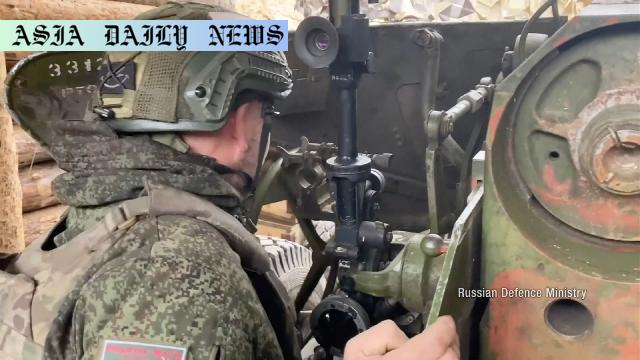Russian casualties significantly undermine military quality while enabling sustained pressure on Ukrainian defenses.
Russian casualties exceed 860,000 since the Ukraine invasion.
UK’s defense ministry notes undermined Russian military quality.
Despite losses, Russia maintains relentless defense pressure.
Russia’s advances slowed in early 2025 after initial progress.

Overview of 860,000 Russian Casualties in Ukraine
The conflict in Ukraine, which began with Russia’s invasion in February 2022, has hit a significant milestone, as reported by Britain’s defense ministry. The past three years of the war have resulted in over 860,000 Russian deaths and injuries. This staggering number indicates not only the human cost of this extended conflict but also its toll on Russia’s military capabilities and resources. On the third anniversary of the war, the UK’s defense program underlined this grievous figure, shedding light on how Russian forces are performing despite monumental losses.
The Impact on Russian Military Capability
Russia’s military capacity has been significantly compromised. Many of the personnel currently serving have received minimal training, as first-rate military recruits have mostly been exhausted. This rapid mobilization has severely affected the quality of their forces. Despite this, their substantial numbers and willingness to endure losses have allowed sustained pressure on Ukrainian defenses. This reflects a harsh strategy by Russian leadership that prioritizes territorial gains over troop welfare, even at such a high cost.
Slowed Progress in 2025 After Accelerative Advances
Although Russia made accelerated territorial advances through 2024, the success rate seems to have declined in early 2025. While these advances have been driven by their overwhelming numbers, the Ukrainian Armed Forces are now better equipped and fortified to delay Russian momentum. This highlights a turning point in the conflict, where the overstretched and undertrained Russian military is facing stronger resistance from well-prepared Ukrainian forces bolstered by Western support and resources.
Leadership’s Tolerance for Casualties
One key aspect of this prolonged conflict is the Russian leadership’s willingness to sustain high casualties. This approach has enabled them to continuously attack, albeit with declining effectiveness. Despite criticisms and internal dissatisfaction, the Russian government remains steadfast in its strategy to press forward, leveraging the numerical advantage their forces hold over Ukraine and its allies. Such resilience on the battlefield underscores the immense pressure that both sides continue to bear.
Global Reactions to the Impact of Casualties
The international community continues to monitor the war’s progress, with varying opinions on its trajectory and impact. The UK’s defense ministry’s report on Russian casualties has sparked widespread concern about the long-term consequences of these losses on Russia’s military and social fabric. Its inability to train and regenerate effective troops amidst such large-scale losses casts doubts on its ability to sustain this high-pressure strategy in the coming years without exacerbating internal dissent and unrest.
Ukraine’s Defense and Strategic Resilience
On the Ukrainian side, high morale, strategic alliances with Western nations, and adaptive defense techniques have kept resistance alive. Despite the constant pressure from Russian forces, Ukraine’s ability to pivot and delay advances suggests strategic ingenuity and a battle-hardened approach. Western military aid has augmented their capacity to contend with the invaders’ quantitative superiority, highlighting mutual interdependence in this war of attrition.
The Path Forward in This Ongoing Conflict
The Russian-Ukrainian war remains a deeply complex and dynamic scenario. The reported figure of over 860,000 casualties adds further gravity to what is already one of the most catastrophic conflicts in recent history. Both sides are grappling with immense human and material costs, and the international community continues to await sustainable pathways to peace. However, the relentless strategies deployed by Russia and the resilience of Ukraine suggest a long, drawn-out engagement rather than an imminent resolution.
Commentary
The Human Cost of War
The staggering number of 860,000 Russian casualties in the ongoing conflict is a testament to the horrifying human toll that wars of this scale leave behind. As we reflect on these numbers, we’re reminded of the individuals behind these statistics—families torn apart, lives forever altered, and nations grappling with a collective sense of loss. The sheer magnitude of lives impacted underscores the necessity of urgently seeking peaceful resolutions over prolonged warfare.
Leadership and the Willingness To Sacrifice
What stands out in this conflict is the Russian leadership’s apparent tolerance for such heavy losses. It raises questions about the long-term consequences of such decisions, not only for the military but also for the national psyche and societal balance. Sustaining a war through sheer numbers and acceptance of unprecedented human casualties reflects strategic priorities devoid of compassion for those bearing the brunt of those choices.
Global Implications and Responsibility
From an international perspective, the ongoing war continues to be a stark reminder of the fragility of global stability. Countries such as Britain have consistently supported Ukraine by providing intelligence and resources, underscoring their commitment to countering aggression. However, we must also ponder the broader implications of such prolonged conflicts. How do we advocate for peace while ensuring that acts of hostility do not go unchecked? This remains one of the most complex questions for the global order to address.


